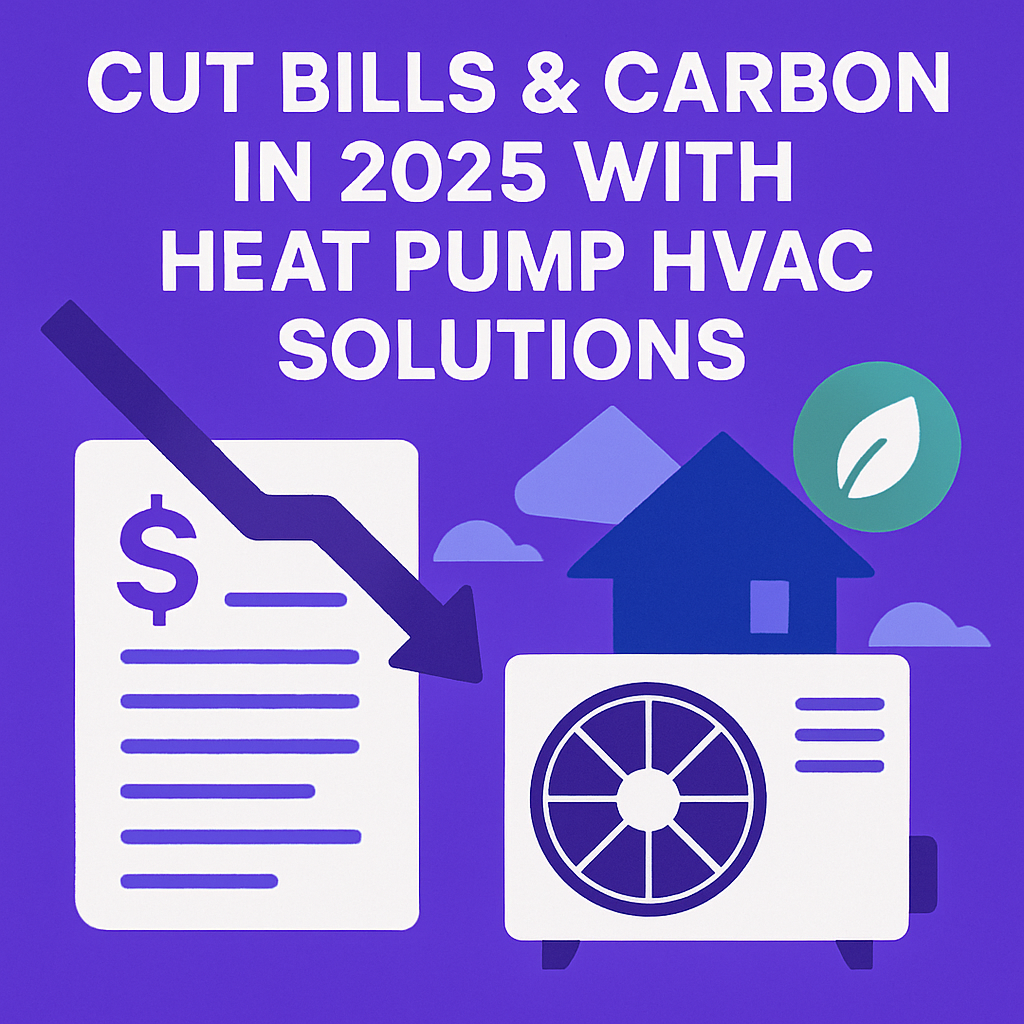Cut Bills & Carbon in 2025 with Heat Pump HVAC Solutions
Introduction
With the ever-rising energy costs and growing concerns about carbon emissions, Australians are increasingly seeking sustainable solutions to mitigate these challenges. One compelling answer lies in the adoption of heat pump HVAC systems. These innovative systems offer an energy-efficient method of heating and cooling, making them an ideal choice for those looking to reduce their environmental footprint while also curbing utility expenses. Selecting the right heat pump system is crucial for maximizing benefits, especially when considering the diverse climates across Australia.
Understanding Heat Pump HVAC Systems
Heat pump HVAC systems operate by transferring heat from one place to another, rather than generating it directly. This makes them significantly more efficient than traditional systems. There are two primary types of heat pump systems:
Air-Source Heat Pumps
These systems extract heat from the outside air and transfer it indoors to provide heating. Conversely, they can reverse the process to cool your home during warmer months. Air-source heat pumps are generally more affordable and easier to install than their ground-source counterparts.
Ground-Source Heat Pumps
Also known as geothermal heat pumps, these systems harness stable underground temperatures to provide heating and cooling. While they require more upfront investment due to the need for underground piping, they offer superior efficiency and lower operating costs over time.
Benefits of Heat Pumps Over Traditional Systems
Heat pumps offer several advantages over conventional heating and cooling systems:
- Energy Savings: Heat pumps can be up to 300% efficient, as they move heat rather than generating it.
- Reduced Emissions: By using renewable sources of energy, heat pumps significantly lower carbon emissions.
- Versatility: They provide both heating and cooling, making them a year-round solution.
- Longer Lifespan: With proper HVAC maintenance and repairs, heat pumps often outlast traditional systems.
Heat Pump HVAC in the Australian Context
Government Incentives and Rebates
Australia offers various incentives to encourage the adoption of renewable energy solutions. Small-Scale Technology Certificates (STCs) and Large-Scale Generation Certificates (LGCs) provide financial benefits for installing heat pumps. Additionally, state-specific programs further enhance affordability.
Regional Climate Considerations
The effectiveness of a heat pump can vary depending on regional climates. For instance, Melbourne’s temperate climate is ideal for air-source heat pumps, while Brisbane’s subtropical climate might benefit more from hybrid systems that incorporate battery and hybrid systems.
Case Study: Heat Pump Installation in Melbourne
A recent installation in Melbourne demonstrated the effectiveness of heat pumps in reducing household energy consumption by up to 40%. The system was seamlessly integrated with a commercial HVAC fit-out to optimize energy efficiency.
ROI Analysis: Payback Periods in Sydney vs Brisbane
In Sydney, the payback period for a heat pump system is approximately 6 years, thanks to mild winters and moderate summers. In contrast, Brisbane’s warmer climate reduces the heating demand, leading to a slightly longer payback period of around 7 years.
Comparing Heat Pump Brands and Models
Leading Brands in Australia
Three of the most popular heat pump brands in Australia are Daikin, Mitsubishi, and Fujitsu. Each brand offers a range of models varying in efficiency, warranty, and cost.
Efficiency Comparison
| Brand | Efficiency Rating | Warranty | Cost Range |
|---|---|---|---|
| Daikin | High | 5 years | $$$ |
| Mitsubishi | Very High | 7 years | $$$$ |
| Fujitsu | High | 5 years | $$ |
Case Study: Real-World Performance in Perth
A Perth homeowner switched to a Mitsubishi heat pump, resulting in a 35% reduction in electricity use. This transition highlights the system’s robustness and efficiency, particularly during the city’s hot summers.
Energy Efficiency and Environmental Impact
Adopting heat pump systems significantly reduces your carbon footprint. When coupled with energy efficiency upgrades, the impact is even more profound.
Integration with Solar and Battery Systems
Combining heat pumps with solar and battery systems can further enhance energy savings. An example in Adelaide demonstrated a hybrid system that cut utility costs by 50% while reducing emissions substantially.
Installation and Maintenance Considerations
Importance of Professional Installation
Professional installation is crucial to ensure optimal performance and longevity of your heat pump system. Expertise in heating and cooling load assessments guarantees the right system size and configuration.
Common Maintenance Practices for Longevity
Routine maintenance, such as cleaning filters and checking refrigerant levels, is essential to maintain efficiency. Regular servicing by professionals, like those offered in our HVAC maintenance and repairs service, can extend the life of your system.
FAQs
How do heat pumps work?
Heat pumps transfer heat from one location to another using a refrigerant cycle, providing both heating and cooling.
Are heat pumps suitable for all climates in Australia?
Yes, heat pumps can be tailored to fit various climates, from Melbourne’s cool winters to Brisbane’s hot summers.
What are the environmental benefits?
Heat pumps reduce carbon emissions by using renewable sources of energy and are highly efficient.
How do I choose the right size heat pump?
A heating and cooling load assessment can help determine the appropriate size for your needs.
What is the average cost of installation?
Installation costs vary but typically range between $3,000 to $7,000, depending on the system type and complexity.
Can heat pumps be integrated with solar?
Yes, integrating heat pumps with solar systems maximizes energy efficiency and cost savings.
How often should maintenance be performed?
Regular maintenance should be performed annually to ensure optimal performance.
Are there any government rebates available?
Yes, various rebates and incentives, such as STCs and LGCs, are available to offset installation costs.
Conclusion & CTA
Heat pump HVAC systems offer a sustainable and cost-effective solution to rising energy costs and carbon emissions. By carefully selecting the right system for your climate and integrating it with renewable energy sources, you can achieve significant savings and environmental benefits. To explore how heat pump systems can fit into your energy strategy, book a free energy efficiency assessment with Hilts today. Transform your energy usage and reduce your carbon footprint, starting now.


